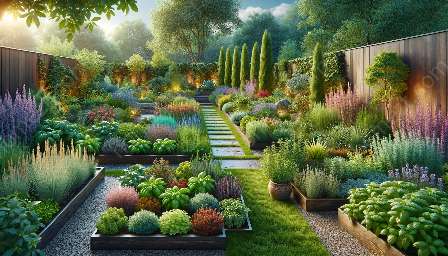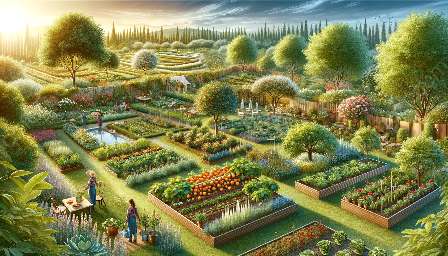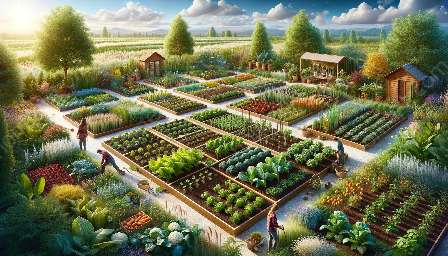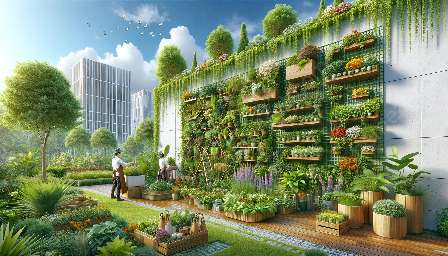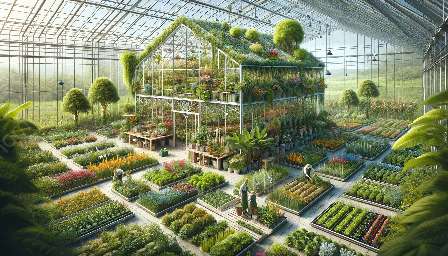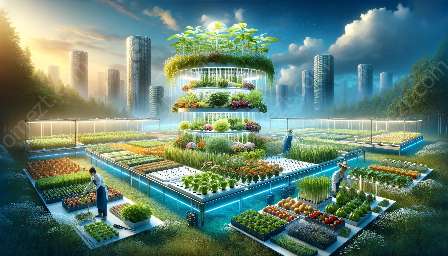In the world of gardening and landscaping, fruit tree gardening and companion planting go hand in hand. By understanding how to integrate various plant species to support one another, you can create a harmonious and productive garden that is both visually appealing and environmentally friendly.
Fruit Tree Gardening
Fruit tree gardening involves the cultivation of trees that produce edible fruits. Whether you have a small backyard or a larger plot of land, growing fruit trees can be a rewarding endeavor, providing you with fresh, delicious fruits and adding beauty to your landscape.
Choosing the Right Fruit Trees
Before you start planting, it's essential to select fruit tree varieties that are well-suited to your climate and soil conditions. Consider factors such as the tree's mature size, pollination requirements, and fruiting season to ensure successful growth.
Site Selection and Planting
When planting fruit trees, choose a location that receives plenty of sunlight and has well-drained soil. Proper spacing between trees is crucial to allow for good airflow and adequate sunlight. Carefully follow recommended planting and spacing guidelines for each fruit tree variety.
Caring for Fruit Trees
Regular maintenance is critical for the health and productivity of fruit trees. This includes watering, mulching, fertilizing, and pest and disease management. Pruning is also essential to maintain tree structure, promote fruit production, and prevent overcrowding.
Companion Planting
Companion planting is a gardening practice that involves planting different species of plants in close proximity to benefit one another. When carefully planned, companion planting can help improve soil health, enhance pest control, and maximize space utilization.
Benefits of Companion Planting
Companion plants can support fruit trees by attracting beneficial insects, repelling harmful pests, and providing complementary nutrients. Additionally, some plant combinations can improve pollination and enhance the overall biodiversity of the garden.
Examples of Companion Plants for Fruit Trees
Consider planting herbs such as chamomile and dill near fruit trees to attract pollinators and deter pests. Other beneficial companions include nitrogen-fixing plants like legumes, which can help improve soil fertility, and shallow-rooted ground covers to prevent soil erosion and conserve moisture.
Gardening and Landscaping Integration
Integrating fruit tree gardening with landscaping creates a visually appealing and functional outdoor space. Proper design and layout can enhance the beauty of fruit trees while incorporating them seamlessly into the overall landscape.
Designing Functional Spaces
When planning your garden and landscape layout, consider practical aspects such as access to fruit trees for maintenance and harvesting. Create organized and accessible pathways, and incorporate seating areas or outdoor living spaces that allow for relaxation and enjoyment of the garden.
Aesthetic Considerations
Choose complementary plants and hardscape elements to enhance the visual appeal of the garden. Select plants with varying colors, textures, and bloom times to create a vibrant and dynamic landscape throughout the year.
By integrating fruit tree gardening, companion planting, and landscaping, you can create a thriving and sustainable garden that is both productive and aesthetically pleasing. Embrace the principles of harmony, balance, and environmental stewardship as you embark on your journey to unlock the full potential of your outdoor space.


